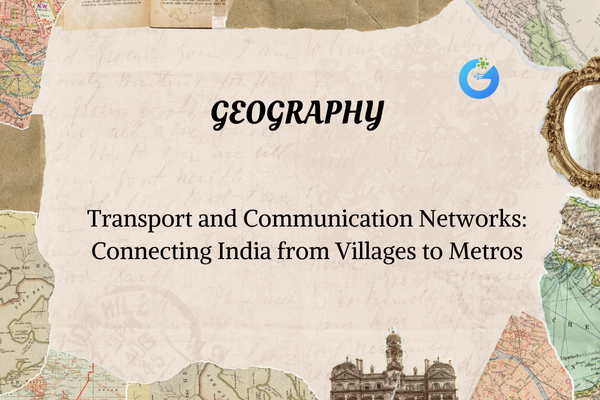Introduction:
How Does Food, Water, and Oxygen Travel in Living Things?
Have you ever wondered:
- How does water reach the top of a tall tree?
- How does oxygen from the air reach your toes?
- How does food get to every cell in your body?
Just like cities need roads and vehicles to move people and goods, your body and plants have their own special transport systems. These systems move food, water, gases, and waste to where they’re needed.
In this lesson, we’ll explore how plants and animals transport substances to stay alive—explained in a simple, Class 9-friendly way.
expert-led Biology classes – visit our website to learn more
Why Is Transportation Important?
Every living organism—whether a tree or a tiger—needs to move substances to survive.
Here’s why transportation is needed:
- To carry oxygen to cells for respiration
- To deliver nutrients to cells for energy and growth
- To remove waste products from cells
- To move hormones and enzymes to where they’re needed
- To carry water and minerals (in plants)
Without transportation, no part of a plant or body could function properly!
Transportation in Plants
Plants don’t have blood or a heart—but they still need to move water, food, and nutrients. Plants have two special types of tissues that help:
| Tissue | Function | Carries |
| Xylem | Transports water and minerals | From roots to leaves (upward) |
| Phloem | Transports food (glucose/sugar) | From leaves to other parts |
How Water Moves Up the Plant
- Osmosis: Water enters root hairs from the soil.
- Xylem carries water and minerals upward like a pipe.
- Transpiration (loss of water from leaves) creates a pull that sucks water upward. This is called transpiration pull.
How Food Moves in Plants
Food made in the leaves (by photosynthesis) is transported by the phloem to roots, stems, and fruits. This process is called translocation.
Transportation in Animals (Humans)
Animals need a circulatory system to transport oxygen, food, and waste.
Main components:
- Blood (the carrier)
- Heart (the pump)
- Blood vessels (the pathways)
The Human Circulatory System
| Part | Function |
| Heart | Pumps blood to all parts of the body |
| Arteries | Carry blood away from the heart (usually oxygen-rich) |
| Veins | Carry blood toward the heart (usually oxygen-poor) |
| Capillaries | Tiny vessels where exchange of gases and nutrients takes place |
The Structure of the Heart
The heart has four chambers:
- Right atrium
- Right ventricle
- Left atrium
- Left ventricle
Valves between chambers ensure blood flows in one direction.
Your heartbeat is the sound of valves opening and closing.
What Is Blood Made Of?
Blood is a fluid tissue that flows through the body, carrying everything needed by the cells.
| Component | Function |
| RBCs (Red Blood Cells) | Carry oxygen using a red pigment called hemoglobin |
| WBCs (White Blood Cells) | Fight germs and infections |
| Platelets | Help in blood clotting to stop bleeding |
| Plasma | Liquid part carrying nutrients and waste |
What Is Double Circulation?
Humans have double circulation which means:
- Pulmonary circulation: Heart → Lungs → Heart
(Picks up oxygen, removes CO₂) - Systemic circulation: Heart → Body → Heart
(Delivers oxygen, picks up waste)
This ensures that oxygen-rich and oxygen-poor blood do not mix.
How Is Waste Transported and Removed?
The blood picks up waste from cells and takes it to organs that remove it:
| Organ | Waste Removed |
| Kidneys | Urea, excess water → urine |
| Lungs | Carbon dioxide → exhaled |
| Skin | Sweat (water, salts) |
This process is called excretion and is explained in more detail in the excretion chapter.
Core Concepts Table
| Concept | Definition / Role |
| Xylem | Plant tissue that transports water |
| Phloem | Plant tissue that transports food |
| Heart | Organ that pumps blood |
| RBCs | Carry oxygen |
| WBCs | Destroy germs |
| Arteries | Carry blood away from heart |
| Veins | Carry blood back to heart |
| Double Circulation | Two-way blood movement: lungs and body |
Frequently Asked Questions
Q1. What is the role of xylem in plants?
It carries water and minerals from the roots to the leaves.
Q2. What are the main components of human blood?
RBCs, WBCs, platelets, and plasma.
Q3. What does phloem transport?
It carries food (glucose) from leaves to other parts of the plant.
Q4. What is the function of the heart?
It pumps blood throughout the body.
Q5. Why do humans need double circulation?
To keep oxygenated and deoxygenated blood separate for efficient function.
Fun Facts!
- Your heart pumps about 5 liters of blood every minute.
- A tree can pull water up more than 100 feet thanks to transpiration!
- RBCs live for about 120 days and are then replaced.
- Blood vessels in one adult could circle the Earth 2.5 times if laid end to end!
- Xylem cells are dead, but they do one of the most important jobs in a plant!
Conclusion
Whether it’s a tall tree or your own body, transportation is key to survival. Plants use xylem and phloem to move water and food. Humans use the heart, blood, and blood vessels to move oxygen, nutrients, and waste.
Without these systems, life would simply stop. So next time your heart beats or you water a plant, remember—you’re witnessing transportation in action!








